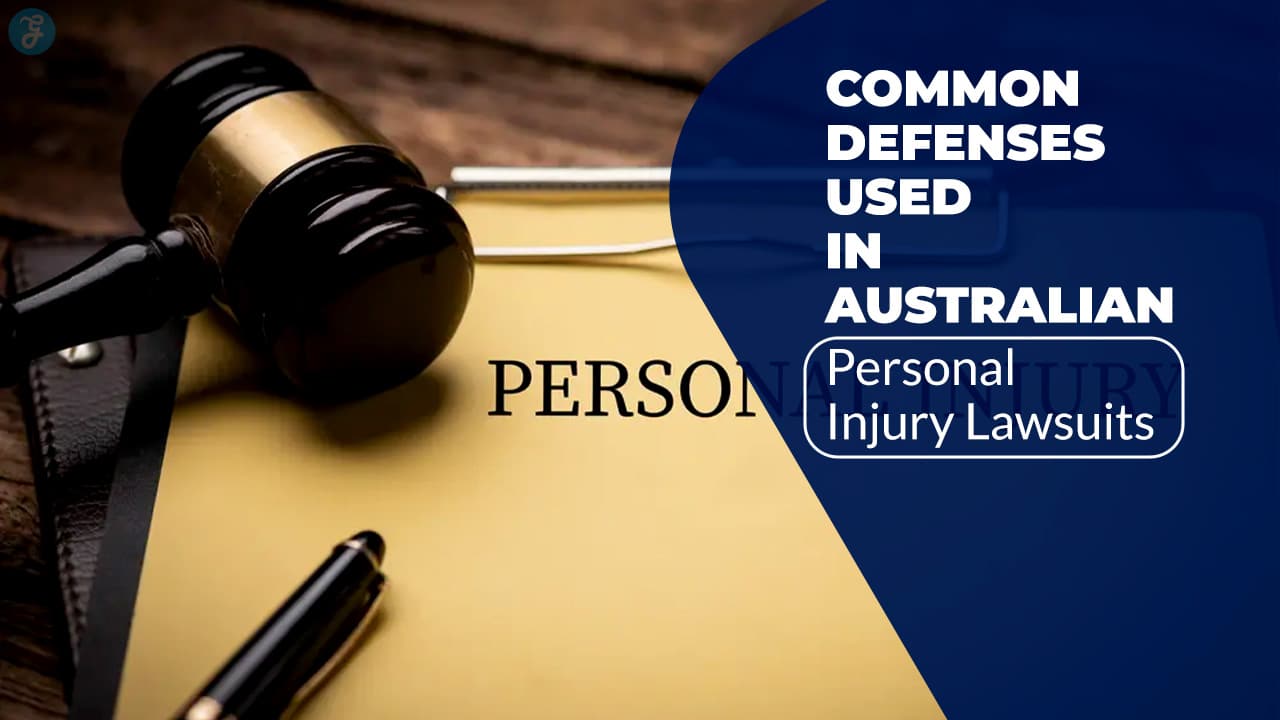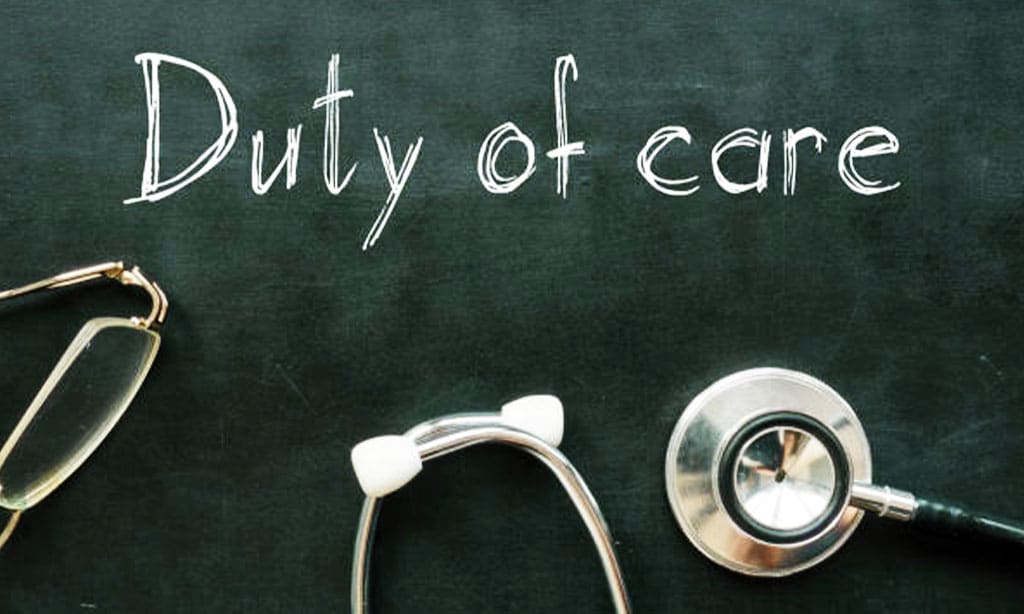Personal injury lawsuits are a critical part of the legal system in Australia, allowing individuals who have been injured due to someone else’s negligence or wrongdoing to seek compensation. However, not all personal injury claims are straightforward.
Defendants in these cases often present various defenses to reduce or eliminate their liability, which can significantly impact the outcome of the lawsuit.
In this article, we will explore the 5 common defenses used in Australian personal injury lawsuits. Understanding these defenses is essential for anyone involved in a personal injury case—whether as a plaintiff or defendant—because they can influence both the legal strategy and the ultimate resolution of the claim.
We will break down each defense, explain how it works, and provide insights into how it may affect your personal injury case. Additionally, we will discuss real-world applications, legal precedents, and ways to counter these defenses effectively.
1. Contributory Negligence
Contributory negligence refers to a situation where the plaintiff (the injured party) is found to have contributed to their own injury through their actions or inactions.
In other words, if the injured person was partially responsible for the incident that caused the injury, the defendant may argue that the plaintiff’s own negligence should reduce or eliminate their compensation.
For example, if someone slips and falls in a store but was distracted by their phone and wasn’t paying attention to a wet floor sign, the store could argue contributory negligence. This defense claims that the plaintiff’s actions played a significant role in the injury occurring.
How Contributory Negligence Affects the Outcome of a Case
In Australian law, contributory negligence doesn’t necessarily bar the plaintiff from receiving compensation. However, it can lead to a reduction in the damages awarded. The court typically considers the degree of negligence by both the plaintiff and the defendant to determine the appropriate compensation.
- If the plaintiff is found to be 20% responsible for the accident, their damages may be reduced by 20%.
- In some cases, the defendant can argue that the plaintiff’s negligence was so significant that they should not receive compensation at all, especially if the plaintiff’s behavior was reckless.
Real-Life Examples of Contributory Negligence
- Traffic Accident: A driver who is rear-ended while they are driving well below the speed limit in hazardous conditions may be partially blamed if they did not use their headlights or signals properly.
- Workplace Injury: An employee who ignores safety protocols or fails to use protective equipment, resulting in an injury, may be partially responsible for their own harm.
How to Prove Contributory Negligence in Court
To argue contributory negligence effectively, the defendant must provide evidence that the plaintiff’s actions contributed to the injury. This can include witness testimony, CCTV footage, expert opinions, and other relevant evidence that shows how the plaintiff’s behavior led to the accident.
Courts will typically analyze:
- Whether the plaintiff knew of the risks involved.
- Whether their actions were reasonable given the circumstances.
- Whether a reasonable person would have acted differently.
2. Assumption of Risk
The assumption of risk defense is used when the defendant argues that the plaintiff voluntarily accepted the risks associated with a particular activity or situation, thus absolving the defendant from liability. In essence, if someone knowingly participates in a risky activity, they are assumed to accept any inherent dangers that come with it.
For instance, a person who participates in an extreme sport like bungee jumping or skydiving inherently accepts the risk of injury. If an accident occurs during such an activity, the defendant (the operator or organizer) may use assumption of risk to argue that the plaintiff’s consent to participate means they are responsible for any injuries.
When Does Assumption of Risk Apply?
This defense is commonly used in cases involving:
- Sports and recreational activities: Participants in activities like football, skiing, or skydiving are usually deemed to have accepted the risks associated with those sports.
- Employment settings: Employees working in high-risk industries like construction may be considered to have assumed the risks associated with their job when they accept the position.
How Assumption of Risk Influences Liability in Injury Cases
If the court finds that the plaintiff voluntarily assumed the risk of injury, the defendant may be absolved from liability. This is particularly relevant in cases where the risks are clearly communicated (such as through warning signs or safety briefings).
Common Scenarios Where Assumption of Risk Applies
- Extreme sports: A skydiver injured during a jump may not be entitled to compensation if they were fully aware of the risks.
- Outdoor activities: A person who falls while hiking may have assumed the risks of the terrain, particularly if it’s known to be slippery or uneven.
Defending Against Assumption of Risk Claims
To defend against an assumption of risk claim, a plaintiff must show that they were unaware of the risk or that the risk was not adequately communicated. For example, if the defendant did not provide proper safety measures or failed to warn the plaintiff of unusual hazards, the assumption of risk argument may not be valid.
3. Lack of Duty of Care
The duty of care is a fundamental concept in personal injury law. It refers to the legal obligation that one party has to avoid causing harm to another. In most cases, a defendant can be held liable if they owed a duty of care to the plaintiff and breached that duty, resulting in the plaintiff’s injury.
For example, a property owner has a duty of care to ensure their premises are safe for visitors. If a customer slips on a wet floor that was not properly marked with a warning sign, the store owner may be held liable for breaching their duty of care.
When is There No Duty of Care?
In some cases, a defendant can argue that they did not owe the plaintiff a duty of care. For example:
- Strangers: In some situations, people may not have a duty to help others (e.g., a passerby witnessing an accident but not actively participating in causing it).
- Absence of a Relationship: If there is no direct relationship or reasonable foreseeability of harm, the defendant may argue that they owed no duty of care.
Key Cases Involving Lack of Duty of Care
Case law plays a significant role in understanding the duty of care. Courts examine the relationship between the parties and the foreseeability of harm. For instance:
- Donoghue v Stevenson (1932): A landmark case in which a manufacturer owed a duty of care to a consumer, even though they had no direct contract.
- Caparo Industries plc v Dickman (1990): This case set out a three-part test for establishing a duty of care: foreseeability, proximity, and fairness.
How to Challenge a Lack of Duty of Care Argument
To challenge this defense, plaintiffs must demonstrate:
- That the defendant’s actions created a foreseeable risk of injury.
- That there was a special relationship or obligation that required the defendant to take steps to avoid harm.
- That it would be fair and reasonable for the defendant to be held liable.
4. Pre-Existing Condition
A pre-existing condition defense is often used by defendants to argue that the plaintiff’s injuries were not caused by the accident, but rather by an existing condition. This is common in personal injury cases where the plaintiff has a medical history of injuries, degenerative conditions, or other health issues that may affect the severity of their injuries.
For example, if someone with a pre-existing back problem is involved in a car accident and suffers further injury, the defendant may claim that the plaintiff’s ongoing back issues were the primary cause of their pain, not the accident itself.
How Pre-Existing Conditions Can Affect Liability
The key issue in these cases is whether the defendant’s actions were the primary cause of the plaintiff’s injury or whether the injury was exacerbated by a pre-existing condition. This defense can reduce or even eliminate the defendant’s liability if it is proven that the injury was not caused by the incident but rather by the plaintiff’s prior condition.
Differentiating Between New and Pre-Existing Injuries
Courts will look at:
- Medical records that show the plaintiff’s condition before the incident.
- Whether the injury worsened after the incident or was simply aggravated by it.
How to Address Pre-Existing Conditions in Court
Plaintiffs can address this defense by presenting expert medical testimony that links the injury directly to the accident. Medical records, diagnostic imaging, and opinions from specialists may all be used to prove that the injury was caused by the defendant’s actions and not just the pre-existing condition.
5. No Causation
The no causation defense is used by defendants to argue that the plaintiff’s injury was not caused by the defendant’s actions. This can be a complex defense, as causation must be established to prove liability in personal injury claims.
For example, if a person slips and falls in a store, but the defendant can show that the fall was caused by something other than their negligence—such as a prior injury or an unrelated condition—the defendant may argue that there is no causation between their actions and the plaintiff’s injury.
How the Defendant Can Argue Lack of Causation
To argue no causation, the defendant must show that:
- The plaintiff’s injury was not foreseeable or caused by their actions.
- There was an intervening event or condition that led to the injury.
Proving Causation in Personal Injury Cases
In personal injury lawsuits, the plaintiff must prove that the defendant’s actions directly caused the injury. This involves demonstrating:
- A clear link between the defendant’s conduct and the plaintiff’s harm.
- That no other factors or events broke the chain of causation.
Key Legal Elements for Establishing Causation
- Factual Causation: The defendant’s actions were a necessary condition for the injury.
- Legal Causation: The defendant’s actions were sufficiently linked to the injury in a legally relevant way.
Common Legal Arguments Against Causation
Defendants may argue that the injury was caused by another factor, such as:
- A pre-existing medical condition.
- An unrelated accident or incident.
Wrap Up
Understanding the 5 common defenses used in Australian personal injury lawsuits is crucial for anyone involved in a personal injury case. Whether you are the plaintiff or the defendant, knowing how these defenses work and how to respond to them can have a significant impact on the outcome of your case.
Contributory negligence, assumption of risk, lack of duty of care, pre-existing conditions, and no causation are all powerful defenses that can reduce or eliminate liability in personal injury lawsuits. It is essential to be prepared and work with experienced legal professionals to navigate these defenses effectively.
By understanding these defenses and their implications, you can make more informed decisions about your legal strategy, improve your chances of securing fair compensation, and ensure a stronger position in court.








































